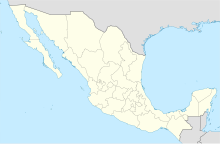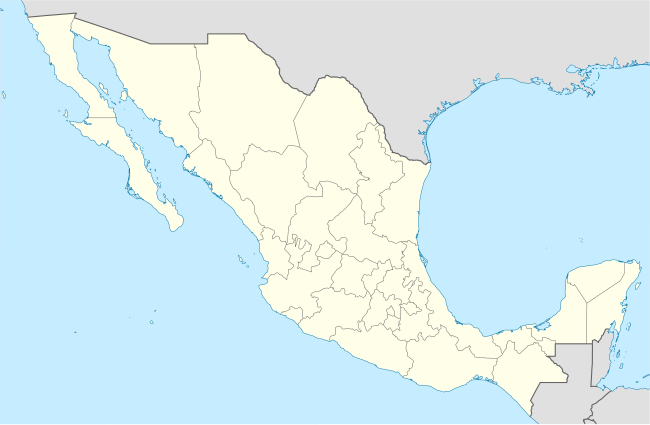Felipe Ángeles International Airport Aeropuerto Internacional Felipe Ángeles | |||||||||||||||||||
|---|---|---|---|---|---|---|---|---|---|---|---|---|---|---|---|---|---|---|---|
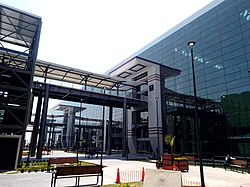 | |||||||||||||||||||
| Summary | |||||||||||||||||||
| Airport type | Public / Military | ||||||||||||||||||
| Owner | Mexican government | ||||||||||||||||||
| Operator | SEDENA | ||||||||||||||||||
| Serves | |||||||||||||||||||
| Location | Santa Lucía, Zumpango, State of Mexico, Mexico | ||||||||||||||||||
| Opened | 21 March 2022 | ||||||||||||||||||
| Hub for | |||||||||||||||||||
| Operating base for | Viva Aerobus | ||||||||||||||||||
| Time zone | CST ( UTC-06:00) | ||||||||||||||||||
| Elevation AMSL | 2,246 m / 7,369 ft | ||||||||||||||||||
| Coordinates | 19°45′24″N 099°00′55″W / 19.75667°N 99.01528°W | ||||||||||||||||||
| Website | |||||||||||||||||||
| Map | |||||||||||||||||||
| Runways | |||||||||||||||||||
| |||||||||||||||||||
| Statistics (2023) | |||||||||||||||||||
| |||||||||||||||||||
Felipe Ángeles International Airport ( IATA: NLU, ICAO: MMSM), also known as Mexico City Felipe Ángeles International Airport or simply Mexico City-AIFA, is an international airport located in Zumpango, State of Mexico, 35 kilometres (22 mi) north of Mexico City. [3] Originally named Santa Lucía Air Force Base, it opened for civilian use in 2022, serving as the second airport for Greater Mexico City. [4] The passenger terminal facilitates domestic and international flights, functioning as a Focus City for Viva Aerobus and Aeromexico Connect. It is set to be the main hub for Mexicana, a state-owned airline. Apart from civilian operations, the airport accommodates the Mexican Air Force, general aviation, and charter flight services.
The airport is also set to become Mexico's largest air cargo hub, it gained a prominent role after recent restrictions at the busier Mexico City International Airport, serving now as the primary hub for cargo airlines AeroUnion, Mas Air, and Awesome Cargo.
Owned by the Mexican government and operated by the Department of National Defense (SEDENA), [5] the airport is named after General Felipe Ángeles, a significant figure in the Mexican Revolution. [6] [7] It is the second-largest airport in Mexico after Cancun International Airport, covering an area of 1,531 hectares (3,780 acres). The airport served 2,630,437 passengers in 2023, almost tripling the 2022 figures [8] and becoming the 10th busiest in the country. [9]
History
Background

The Santa Lucía Air Force Base, established in 1952 to relocate the Balbuena Military Air Field, officially inaugurated its aerodrome on 24 November 1952, during Miguel Alemán´s administration. The complete transition of aircraft from Balbuena to Santa Lucía occurred in 1959. The aerodrome featured a runway measuring 3,780 metres (12,400 ft) in length and 75 metres (246 ft) in width, boasting the widest paved runway in Mexico at the time. It was named "General Alfredo Lezama Álvarez" in honor of its commander from 1961 to 1964. [10]
The history of the new Felipe Ángeles Airport unfolds as a response to congestion challenges at Mexico City International Airport, a longstanding topic in Mexican politics since the early 2000s. The airport, constrained by its location in a densely populated area, faced limitations in infrastructure expansion due to urban constraints, limited runway space, and congestion during peak hours.[ citation needed]
Large infrastructure projects in Mexico, notably in transportation, have historically been key elements of presidential legacies. This is due to centralized decision-making, their symbolic importance for progress, and the desire of leaders to leave a lasting impact. In 2002, President Vicente Fox unveiled an ambitious plan for a new, expansive airport on 5,000 hectares (12,000 acres) of land in the municipalities of Atenco and Texcoco. This proposal aimed to address the congestion issues at Mexico City International Airport and meet the growing demands of air travel. However, the Atenco project faced significant opposition and controversy, particularly from the Community Front in Defense of Land ( Spanish: Frente del Pueblo en Defensa de La Tierra, FPDT), an organization representing locals who would be displaced by the airport's construction. The protests against the project culminated in violent clashes, leading to the cancellation of the new airport.[ citation needed]
In 2014, President Peña Nieto reignited plans for a major airport infrastructure project with the announcement of the Texcoco Airport. Positioned as Mexico's most significant public infrastructure undertaking in a century, the Texcoco Airport was designed to replace the aging Mexico City International Airport by 2023. Faced with mounting opposition and controversy, President López Obrador, then a presidential candidate, campaigned against the ongoing Texcoco Airport construction. [11]
Controversy
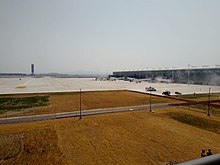
The new Mexico City Airport quickly became a focal point of intense and conflicting political discourse in Mexico, reflecting a broader ideological clash within the country regarding economic models and governance strategies.
Upon winning the presidency, López Obrador fulfilled his campaign promise to reassess the Texcoco airport. He initiated a referendum in the first half of October 2018, organized by the Arturo Rosenblueth Foundation and a group of citizens. [12] This referendum aimed to measure public opinion on whether to complete the Texcoco Airport or proceed with the Santa Lucía expansion. However, the process faced criticism for lacking official validity and adhering to established legal procedures. Controversy also arose over potential challenges in accurately interpreting the results.
Despite the controversy, the referendum took place, and the results favored the construction of the Santa Lucía project. A significant majority of participants (69.95%) voted in favor of Santa Lucía, while a smaller percentage (29.08%) supported the continuation of the Texcoco project. [13] Although the informal nature of the survey raised some controversy, it influenced the decision to proceed with the Santa Lucía airport. Subsequently, López Obrador's administration moved forward with the expansion of the Santa Lucía air base into an airport, officially named Felipe Ángeles International Airport. [14]
Construction
Construction started on 17 October 2019, [15] following the lifting of multiple judicial suspensions against the project, [16] primarily due to environmental and cultural study concerns and lack of transparency. [17] [18] The relocation and resizing of military facilities, including the runway, apron, and hangars, were undertaken to align with the specifications of the new civil airport.
During construction, an accident occurred involving 22 workers, resulting in minor injuries. This incident took place when workers opted for a crane-type vehicle as their mode of transportation. The construction period coincided with the COVID-19 pandemic, leading to infection among at least four employees, along with 37 suspected cases and three deaths as of 9 June 2020, despite efforts to enforce social distancing and other preventive measures. [19]
The terminal area's construction unearthed remains of at least 200 mammoths in the former Lake Xaltocan. Authorities confirmed that the findings did not warrant a halt in the airport project. [20] [21] [22] Mexican architect Francisco González Pulido and military general Gustavo Vallejo oversaw the airport's design. Groupe ADP managed the master plan, and airspace navigability studies were conducted by Airbus subsidiary NAVBLUE. [23] The first phase, completed as scheduled, included two runways and a new terminal. [24] [25]
Felipe Ángeles International Airport (AIFA) commenced operations on 21 March 2022, with VivaAerobús launching the first commercial passenger flight arriving from Guadalajara. [26] Subsequently, Conviasa initiated the airport's first international flight to Caracas, Venezuela. The airport ventured into cargo operations on 1 September 2022, with AeroUnion's cargo flight arriving from Tijuana. [27]
The airport's development has become a focal point in Mexico's political discourse, representing ideological clashes and embodying deeper conflicts. The rapid transition from canceling the previous administration's project to the swift realization of a new one underscores the airport's political significance. The military's role adds complexity to debates about its involvement in civilian projects and potential implications for democratic governance. Beyond its infrastructural aspects, the airport encapsulates broader sociopolitical tensions, symbolizing opposing visions and ideologies in Mexico. [28]
Facilities
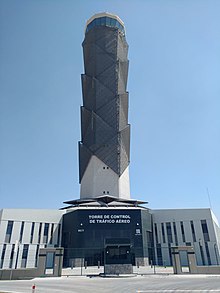
The airport covers 1,531 hectares (3,780 acres) and is situated at an elevation of 2,246 metres (7,369 ft) above mean sea level. With a capacity to handle 20 million passengers annually, it is equipped to accommodate wide-body aircraft, including the Boeing 787 and 747. Notably, the Mexico City airspace is the first in the country to utilize the performance-based navigation system (PBN). This allows simultaneous operations at Felipe Ángeles International Airport, Mexico City International Airport, and Toluca International Airport without one airport's operations impeding those of the others.
Runways
Recognized as a Hot and High airport, Felipe Ángeles Airport boasts the longest runways in the country and the second-longest commercial runway in North America, following a 4,900 metres (16,100 ft) runway at Denver International Airport. Setting it apart, it is one of the few airports in Mexico equipped with three runways, alongside those in Chihuahua and Tampico. Initially announced in 2019, the Department of National Defense (SEDENA) declared that the civilian runways at Felipe Ángeles Airport would feature a CAT III precision approach system. However, during the joint publication of official aerodrome information with the Department of Infrastructure, Communications, and Transportation (SICT) and SENEAM, on 16 December 2021, the ILS system was officially declared as CAT I for the airport's inauguration, allowing for simultaneous operations. [29]
| Number | Length | Width | ILS | Use |
|---|---|---|---|---|
| 04L/22R | 4,500 metres (14,800 ft) | 45 metres (148 ft) | CAT I¹ [30] | civil |
| 04C/22C | 4,500 metres (14,800 ft) | 45 metres (148 ft) | CAT I | civil |
| 04R/22L | 3,500 metres (11,500 ft) | 45 metres (148 ft) | VFR | military |



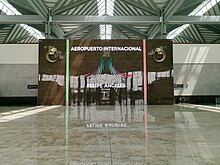
Over 28 kilometres (17 mi) of asphalt concrete taxiways facilitate the movement of aircraft around the airfield. These taxiways have a standard width of 23 metres (75 ft), featuring 7 metres (23 ft) of heavy-duty shoulders and 7 metres (23 ft) of erosion control pavement on each side. [31] The airport stands out as the only one in Mexico, as of 2023, to utilize painted markings, lighted signage, and embedded pavement lighting as visual aids.
The primary apron, named the "East apron," is constructed of hydraulic concrete and offers parking positions for 29 narrow-body aircraft or a combination of 12 wide-body and 5 narrow-body aircraft. Additionally, the "central apron" provides parking for 5 wide-body or 10 narrow-body aircraft adjacent to the terminal, along with 6 remote positions. In total, there are 45 parking positions available, accommodating either narrow-body aircraft exclusively or a combination of 17 wide-body and 11 narrow-body aircraft.
Terminal
The passenger terminal at Felipe Ángeles Airport accommodates both arrival and departure services for domestic and international flights within a multi-story building parallel to runway 04C/22C. The check-in area features 100 conventional counters, 86 self-service kiosks, 20 drop-off counters, and a space for future growth, covering 5,410 square metres (58,200 sq ft). Security check areas include 22 X-ray security belts and 6 additional belts for future expansion, across 4,740 square metres (51,000 sq ft). The departures concourse is a 1,080 metres (3,540 ft) long, 29,100 square metres (313,000 sq ft) structure with 34 gates.
- Gates 101-105 are located in the south portion of the concourse on the ground floor with direct access to the apron, allowing passengers to board their planes by walking to the aircraft.
- Gates 106-119 are equipped with dual jetbridges, offering flexibility for either a single wide-body aircraft using both jetbridges or simultaneous boarding/disembarking for two narrow-body aircraft. Each gate has a paired identification (i.e., 106A, 106B)
- Gates 120-134 are bus gates.
The baggage claim area, covering an initial phase of 13,015 square metres (140,090 sq ft), incorporates three carousels for national baggage and four for international baggage, with an additional four carousels designated for future expansion. The airport also includes 1,312 square metres (14,120 sq ft) of VIP lounges, encompassing the VIPort Lounge, The Grand Lounge Elite, and Salón Hacienda Santa Lucía. Adjacent to the terminal, the Ground Transportation Terminal ( Spanish: Terminal Intermodal de Transporte Terrestre, TITT), centrally located, hosts essential transportation services, such as a Suburban train and a bus station, organized within a six-level structure:
- Suburban Train Level (−9.35 metres (−30.7 ft)): Two platforms accommodating up to 1,138 users.
- Basement 2 Level (−7.60 metres (−24.9 ft)): 920 long-stay parking spaces.
- Basement 1 Level (−3.80 metres (−12.5 ft)): 896 long-stay parking spaces.
- Level 0: 435 short-stay parking spaces, a Suburban train ticketing area, a Bus terminal, and a Mexibús terminal.
- Level 1 (+3.50 metres (11.5 ft)): 716 short-stay parking spaces.
- Level 2 (+7 metres (23 ft)): 1,058 short-stay parking spaces and entrance to the arrivals hall at the passenger terminal.
- Level 3 (+10.50 metres (34.4 ft)): Plaza Mexicana and entrance to the check-in area at the passenger terminal.

Cargo
The cargo complex features a hydraulic concrete apron with six positions for wide-body aircraft, five of which can adapt to accommodate two narrow-body aircraft simultaneously. [32] It encompasses three clusters of facilities: The first one is an airside area where activities revolve around airline cargo operations and ground handling services provided by regulated warehouses spanning 252,900 square metres (2,722,000 sq ft). Beyond the controlled area, a second set of facilities includes offices for customs agencies, branches of courier companies, and banking units, covering an area of 72,500 square metres (780,000 sq ft). The surrounding areas are designed for an industrial and logistics complex. By July 2023, cargo operations were scheduled to cease at Mexico City International Airport, following a government decree. [33] [34]
Other Facilities
The General Aviation Building (FBO) is designated for general/non-commercial aviation or private jets. The terminal offers services for the convenience of passengers during their private flights, including a pilots' lounge and a passenger lounge. Adjacent to this facility is a general aviation apron, providing stands for fixed-wing aircraft and heliports for private aviation, as well as hangars and maintenance facilities.
Felipe Ángeles Airport features a unique cultural corridor designed for both transit passengers and local residents. According to authorities, this is the first cultural passageway of its kind in the country. The corridor houses three museums open to the public from Tuesday to Sunday, between 09:00 and 16:00:
- Mammoth Museum: Officially known as Santa Lucía Quinametzin Paleontological Museum, it was established to preserve, exhibit, and research approximately 200 mammoth remains discovered during the airport's construction.
- Military Aviation Museum: With 12 exhibition galleries and 4 temporary displays, this museum showcases the history of Mexican military aviation through its collection of 50 aircraft.
- Historic Railcar and Cultural Historical Train Museum: Created from railcars that served the Department of National Defense (SEDENA) and subsequently restored, including the " Francisco I. Madero" car, "Jalisco" car (used as a cafeteria), and " Adolfo Ruíz Cortines" car (reading room). Additionally, a replica of the old Santa Lucía station is on display.
Airlines and destinations
Passenger
Cargo
Airlines providing on-demand cargo services

Destinations map
International destinations from Felipe Ángeles International Airport Red = Year-round destination Blue = Future destination Green = Seasonal destination |
Statistics
Graphs are unavailable due to technical issues. There is more info on
Phabricator and on
MediaWiki.org. |
Busiest Routes
| Rank | City | Passengers | Ranking | Airline |
|---|---|---|---|---|
| 1 | 359,151 | Aeroméxico, Viva Aerobus, Volaris | ||
| 2 | 136,698 | Aeroméxico Connect, Viva Aerobus, Volaris | ||
| 3 | 127,217 | Aeroméxico, Viva Aerobus, Volaris | ||
| 4 | 120,019 | Viva Aerobus, Volaris | ||
| 5 | 91,865 | Aeroméxico Connect, Volaris | ||
| 6 | 54,612 | Aeroméxico Connect, Viva Aerobus, Volaris | ||
| 7 | 50,752 | Aeroméxico Connect, Volaris | ||
| 8 | 46,150 | Viva Aerobus, Volaris | ||
| 9 | 38,586 | Aeroméxico Connect, Viva Aerobus | ||
| 10 | 31,676 | Volaris | ||
| 11 | 31,665 | Volaris | ||
| 12 | 28,907 | Volaris | ||
| 13 | 26,848 | Arajet | ||
| 14 | 19,403 | Aeroméxico Connect | ||
| 15 | 18,330 | Copa Airlines |
Ground Transportation

While the initial project outlined comprehensive public transport connections to Mexico City in conjunction with private transport options, challenges in resolving transportation logistics for the airport's inauguration persist. As of November 2023, accessibility to the airport remains insufficient.
Road
The primary vehicular entrance to the airport is connected to a highway from the Circuito Exterior Mexiquense, spanning approximately 4.5 kilometres (2.8 mi). [52] Within the airport grounds, a road with three entry lanes, three exit lanes, and mammoth sculptures reflecting discoveries in the central area facilitates access to the terminal. Future plans include extending the Mexico- Pachuca highway towards the airport, with a deviation near Santa Lucía to connect to the terminal.
Bus
On the ground floor of the Ground Transportation Terminal (TITT), a bus station accommodates long-distance passengers with space for 16 buses. The terminal comprises ticket counters, automated machines, waiting areas, a VIP lounge, ATMs, retail stores, currency exchange services, souvenir shops, package services, a cargo warehouse, restrooms, administrative offices, staff rest areas, and other amenities, including Wi-Fi, fast food options, and bathrooms. [53]
Private company Autobuses de Oriente provides connections to and from TAPO, Indios Verdes, and Mexico City International Airport. [54] Additionally, ETN Turistar offers services connecting the airport to Terminal de Autobuses del Sur, Terminal de Autobuses del Norte, and Terminal de Autobuses de Querétaro. [55] These services are current as of November 2023:
| Company | Destinations within Greater Mexico City |
|---|---|
| ADO | Metro Indios Verdes, Terminal del Norte |
| ADO Conecta | Mexico City International Airport T1, TAPO |
| Conexión | Terminal del Norte |
| Ebus | Ángel de la Independencia, Auditorio Nacional, WTC |
| Ecoelite | Monumento a la Revolución, Palacio de Bellas Artes, Plaza Satélite, Real Inn Perinorte |
| ETN/VIVABUS | Tepotzotlán, Terminal del Norte, Terminal del Sur |
| Flecha Roja | Tepotzotlán, Terminal Observatorio |
| Futura | Terminal del Norte |
| Pullman de Morelos | Mexico City International Airport T1, Perisur |
| Company | Long-distance destinations |
| ADO | Pachuca, Poza Rica, Puebla, Tuxpan |
| Autovías/La Línea | Atlacomulco, Jilotepec |
| AVM Ovnibus | Actopan, Huehuetoca, Ixmiquilpan, Pachuca, Progreso de Obregón |
| Caminante | Toluca-Comonfort, Toluca-Tollocan |
| Costa Line | Acapulco, Chilpancingo |
| Estrella Roja | Puebla |
| Estrella Blanca (Conexión) | Pachuca |
| ETN/VIVABUS | Querétaro, San Juan del Río |
| Futura | Pachuca, Tulancingo |
| ODM | Huauchinango, Pachuca, Poza Rica, Tampico, Tuxpan |
| ODT | Pachuca |
| Primera Plus | Querétaro, San Juan del Río |
| Pullman de Morelos | Cuernavaca |
Taxi
The airport provides designated boarding areas for taxis that have received approval from the Department of Infrastructure, Communications, and Transportation (SICT). These services are closely regulated by the airport authorities to ensure safety and reliability.
Public Transport
The Mexibús bus rapid transit system Line I, offers a connection to Ojo de Agua station in the State of Mexico. From Ojo de Agua, passengers can transfer to Ciudad Azteca metro station. Plans are underway to extend Mexibús Line IV to AIFA in the future, creating an additional connection between the airport and the metro system at Indios Verdes station. [56]
Future Rail Connection
A proposal, presented in 2020, outlines a 23 kilometres (14 mi) extension of the Suburban train network to serve the airport. [57] The extension will branch off from the existing line at Lechería station, heading northeast to the airport grounds. [58] [59] Originally anticipated for completion by December 2023, delays related to construction challenges, particularly the relocation of tracks for cargo-carrying trains, have pushed the expected opening to June 2024. [60]
Air Force Base Nr. 1 Santa Lucía

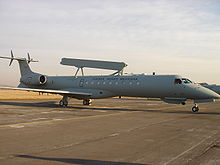
Air Force Base Nr. 1 ( Spanish: Base Aérea Militar N.º 1, Santa Lucía) (B.A.M. No. 1) is located in the eastern section of the airport grounds just south of San Lucas Xolox. The base encompasses a housing complex for military personnel affiliated with the Mexican Army. The facilities at the Military Air Base include a military aviation apron, control tower, and runway 04R/22L, designated exclusively for military use. It serves as a hub for various units and headquarters related to reconnaissance, transport, combat wings, specialized training centers, and sports facilities. Additionally, it houses facilities dedicated to national security and natural disaster response. Following the construction of the civil airport, B.A.M. No. 1 underwent a complete reconstruction, adopting a new configuration that includes a Military town with housing units, the 37th Military Zone General Command, a Pavilion for Dignitaries, a Housing Complex, a Military Hospital, the Military Police Training Center, a Shopping Center, and The Military School of Specialist Troops (EMTEFAM). Operational Squadrons at BAM No. 1 include:
- 401 Air Squadron: Operates supersonic F-5E/F twin-jet aircraft designed for attack and air defense missions, featuring a maximum speed of Mach 1.63 and a range of 2,483 kilometres (1,543 mi).
- 101 Air Squadron: Operates EC725 Cougar aircraft.
- 112 Air Squadron: Operates MD-530F aircraft.
- 104 Air Squadron: Operates Bell 412 aircraft.
- 301 Air Squadron: Operates C-295 aircraft.
- 302 Air Squadron: Operates C-130 and C-27J aircraft.
- 303 Air Squadron: Operates Mi-17 aircraft.
- 502 Air Squadron: Operates Boeing 737-200 and Boeing 737-800 aircraft.
- Air Surveillance Squadron: Operates Embraer 145 aircraft.
- Phototechnical Air Squadron: Operates C-90 aircraft.
See also
- List of the busiest airports in Mexico
- List of airports in Mexico
- List of airports by ICAO code: M
- List of busiest airports in North America
- List of the busiest airports in Latin America
- Transportation in Mexico
- Tourism in Mexico
- Mexico City International Airport
- Mexico City Texcoco Airport
- List of Mexican military installations
- Mexican Air Force
- Aerolínea del Estado Mexicano
- Transport in Mexico City
- Valley of Mexico
- Greater Mexico City
- Zumpango Region
- Mexibús
References
-
^
 Mexico
Mexico
- ^ Airport information for Santa Lucía Air Force Base Num 1 at Transport Search website.
- ^ Google Maps directions from Santa Lucía base to Zócalo, retrieved 6 November 2021
- ^ "On March 21, the three runways at the AMLO's General Felipe Ángeles Airport will begin to operate". Mexico City Post. 20 February 2022.
- ^ Espino, Manuel (17 August 2021). "Sedatu traspasa 5 hectáreas a Sedena para construcción de aeropuerto "Felipe Ángeles"". El Universal (México). Retrieved 17 January 2023.
- ^ "¿Quién es Felipe Ángeles y por qué el aeropuerto se llama así? ("Who was Felipe Angeles and why is the airport called that?"". El Universal (Mexico City). 2 October 2021.
- ^ "Resolución por la que se autoriza la constitución de una Empresa de Participación Estatal Mayoritaria denominada Aeropuerto Internacional Felipe Ángeles, S.A. de C.V., misma que estará agrupada en el sector coordinado por la Secretaría de la Defensa Nacional". DOF - Diario Oficial de la Federación. Diario Oficial de la Federación. Retrieved 17 January 2023.
- ^ "Estadística Operacional de Aeropuertos / Statistics by Airport". Agencia Federal de Aviación Civil. Retrieved 26 January 2023.
- ^ "Airport Numbers 2023" (PDF) (in Mexican Spanish). Aeropuerto Internacional Felipe Ángeles. Retrieved 23 January 2024.
- ^ "Base Aérea Militar Nº 1 "P.A. Alfredo Lezama Álvarez"". Mexicoaeroespacial (in Spanish). Retrieved 27 May 2022.
- ^ "AMLO propone dos pistas en aeropuerto de Santa Lucía". www.milenio.com (in Mexican Spanish). Retrieved 27 May 2022.
- ^ "¿Quiénes organizan la consulta sobre el Nuevo Aeropuerto?". Obras (in Spanish). 23 October 2018. Retrieved 27 May 2022.
- ^ Staff, Forbes (25 October 2018). "Inicia la consulta ciudadana sobre el futuro del nuevo aeropuerto". Forbes México (in Mexican Spanish). Retrieved 27 May 2022.
- ^ "Adiós al NAIM: La opción de construir pistas en Santa Lucía gana en la consulta convocada por López Obrador". Animal Político (in Spanish). 29 October 2018. Retrieved 27 May 2022.
- ^ "Mexican president says new airport construction to start next week". Reuters. 24 April 2019. Retrieved 15 June 2019.
- ^ "Suspenden aeropuerto de Santa Lucía hasta que tenga permisos ambientales" [Airport of Santa Lucía suspended until environmental permission is released]. CNN en Espanol (in Spanish). 12 June 2019. Retrieved 15 June 2019.
- ^ "Garantiza AMLO transparencia en el tema de Santa Lucía". El Siglo (in European Spanish). 10 October 2019. Retrieved 17 October 2019.
- ^ "Semarnat palomea a Santa Lucia entrega dictamen sobre el nuevo aeropuerto" [Environmental agency delivers Santa Lucia Airport construction approval], Excelsior (in Spanish), Mexico City, 21 July 2019, retrieved 21 July 2019
- ^ "Durante la construcción del aeropuerto de Santa Lucía, murieron al menos tres trabajadores por COVID-19". infobae (in European Spanish). Retrieved 9 June 2020.
- ^ "'Mammoth central' found at Mexico airport construction site". apnews. Retrieved 3 September 2020.
- ^ "In Mexico City, experts find bones of dozens of mammoths". ABC News. Retrieved 24 May 2020.
- ^ Aitken, Peter (23 May 2020). "Experts find bones of dozens of mammoths in Mexico City". Fox News. Retrieved 24 May 2020.
- ^ "BNamericas - Santa Lucía airport studies go to internatio..." BNamericas.com. Retrieved 17 October 2019.
- ^ "Santa Lucía se enfocaría en low-costs y carga". a21.com.mx (in Spanish). Retrieved 17 October 2019.
- ^ Abi-Habib, Maria; Cantú, Elda (25 March 2022). "A New International Airport Is Not Quite Ready for Takeoff". The New York Times. ISSN 0362-4331. Retrieved 26 March 2022.
- ^ ""¡Sí se pudo!": aterriza primer vuelo comercial en el aeropuerto de Santa Lucía". www.milenio.com. Retrieved 22 March 2022.
- ^ "El aeropuerto de Santa Lucía es "una hazaña": AMLO aterrizó por primera vez en su obra insignia". infobae (in European Spanish). 10 February 2021. Retrieved 10 February 2021.
- ^ "El portal único del gobierno. | gob.mx".
- ^ Eduardo Murillo (29 January 2020). "Tendrá tecnología de punta el aeropuerto de Santa Lucía" [The Santa Lucia airport will have cutting-edge technology]. La Jornada (in Spanish). Retrieved 30 January 2020.
- ^ SICT-SENEAM AIP/PIA (Publicación de Información Aeronáutica) enmienda AIRAC 02/22 pag. AD-2-2-33-MMSM sec MMSM-AD-2.19
- ^ "Pista Central y Norte, Plataformas y Rodaje (Frente de trabajo)". Sitio web del AIFA (in Mexican Spanish). Retrieved 11 February 2022.
- ^ "AIFA. Inicia operación de terminal de carga con vuelo de Aerounion". Grupo Milenio (in Mexican Spanish). Retrieved 7 September 2022.
- ^ "El Gobierno cierra por decreto el aeropuerto de la Ciudad de México a los vuelos de carga" (in Spanish). El País. 3 February 2023.
- ^ "Decreto que establece el cierre del Aeropuerto Internacional de la Ciudad de México Benito Juárez, para las operaciones del servicio al público de transporte aéreo que se indica" (in Spanish). 2 February 2023. Archived from the original on 20 May 2023.
- ^ "Aeroméxico flight from AICM to Morelia returns: Sectur Michoacán". CB Digital (in Spanish). April 2024. Retrieved 11 April 2024.
- ^ "Aeroméxico flies to Tulum from AIFA for few slots at AICM". Reportur (in Spanish). April 2024. Retrieved 4 April 2024.
- ^ "Hito histórico: Mega Travel traerá al AIFA vuelo charter de Bulgaria". 18 December 2023.
- ^ "Mega Travel ofrecerá vuelos chárter a Bulgaria desde el AIFA". 20 December 2023.
- ^ a b "Viva Aerobus Bets Big on AIFA: 17 New Routes". Aviacionline. 28 September 2023. Retrieved 28 September 2023.
- ^ "Aeroméxico inaugurates cargo route between Mexico and Wuhan, China" (in Spanish). May 2021. Retrieved 10 May 2021.
- ^ "Atlas Air Schedule". Atlas Air. Retrieved 19 December 2023.
- ^ "China Southern Airlines inicia operaciones de carga en el AIFA" (in Spanish). T21. 6 March 2023.
- ^ Valadez, Roberto; Ordaz, Yeshua (28 February 2023). "AIFA lands first DHL cargo flight". Milenio (in Spanish). Grupo Milenio. Retrieved 28 February 2023.
- ^ "Emirates SkyCargo migrará operaciones del AICM al AIFA". Grupo Milenio (in Mexican Spanish). June 2023. Retrieved 12 June 2023.
- ^ "Ethiopian Airlines latest carrier to switch freighter flights to New Mexico City Airport". Aviation Week. 7 September 2023. Retrieved 7 September 2023.
- ^ "Lufthansa Cargo expands cargo service to two airports in Mexico City". The Load Star. 16 June 2023. Retrieved 17 June 2023.
- ^ "New all cargo air route links China's Zhejiang, Mexico". Xinhua. 30 October 2023. Retrieved 30 October 2023.
- ^ "Mexican Carrier MasAir Begins Flying Directly to China". 4 June 2022.
- ^ "Schedule". MSC Air Cargo. Retrieved 8 July 2023.
- ^ Noëth, Bart (31 May 2021). "Ostend-Bruges Airport officially added to Qatar Airways Cargo Network". Aviation24.be. Retrieved 19 September 2021.
- ^ "Estadística operacional por origen-destino / Traffic Statistics by City Pairs" (in Spanish). Agencia Federal de Aviación Civil. January 2024. Retrieved 29 January 2024.
- ^ "Aleatica conectará el Circuito Exterior Mexiquense con Santa Lucía". Real Estate Market & Lifestyle (in European Spanish). Retrieved 27 May 2022.
- ^ "Destinos hacia la Ciudad de México" (PDF).
- ^ "ADO te lleva al AIFA: ¿Cómo llegar en autobús desde la TAPO, Indios Verdes y el AICM?". Radio Fórmula. 3 May 2022.
- ^ "Boletos de autobús al AIFA". ETN.
- ^ Carillo, Emmanuel (3 February 2022). "AIFA despegará sin Mexibús ni Suburbano; empresa operará 9 rutas de conexión". Forbes.
- ^ "Tres ferrocarriles llegarán al Valle de México en diciembre de 2023" (in Spanish). Expansión. 31 March 2023.
- ^ Notimex (19 March 2020). "Ampliarán Tren Suburbano para conectar aeropuerto Felipe Ángeles ("Suburban Train will be extended to connect to Felipe Angeles Airport")". Mexico City: 24 Horas. Retrieved 19 March 2020.
- ^ Noé Cruz (20 March 2020). "Conectarán Santa Lucía con el Tren Suburbano ("Santa Lucia will be connected by the Suburban Train")". Mexico City: El Universal. Retrieved 21 March 2020.
- ^ https://www.bnamericas.com/en/news/suburban-train-branch-connecting-aifa-with-mexico-city-to-open-next-year
External links
-
 Media related to
Felipe Ángeles International Airport at Wikimedia Commons
Media related to
Felipe Ángeles International Airport at Wikimedia Commons - Official Website
- Felipe Ángeles Airport at gob.mx (Spanish)
- Aeronautical chart and airport information for MMSM at SkyVector
- Current weather for MMSM at NOAA/ NWS
- Felipe Ángeles Airport information at Great Circle Mapper
- Accident history for NLU at Aviation Safety Network
- AIFA construction - official website Archived 21 March 2022 at the Wayback Machine (in Spanish)
- Airports in Mexico
- Airports in the State of Mexico
- Transportation in Mexico
- Transportation in the State of Mexico
- Transportation in Mexico City
- Infrastructure in Mexico City
- Tourist attractions in the State of Mexico
- Economy of Mexico City
- Airports established in 2022
- 2022 establishments in Mexico
- Mexican Air Force
- Mexican Air Force bases
- Military installations of Mexico
- Mexico City metropolitan area
- Mexico City
- Zumpango

